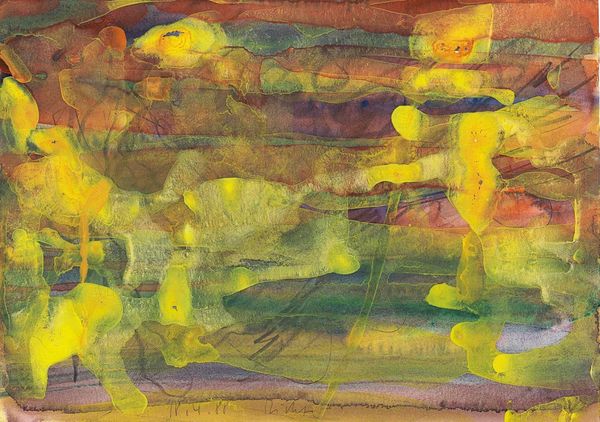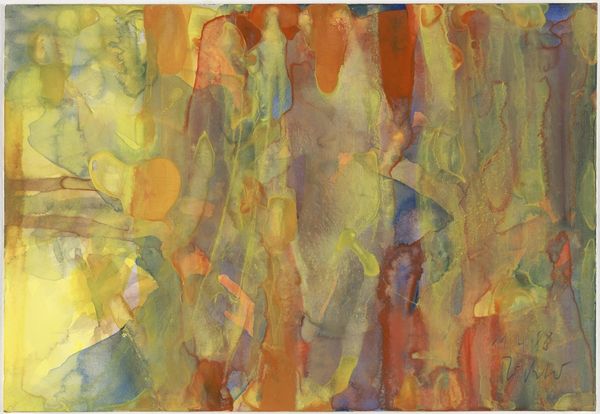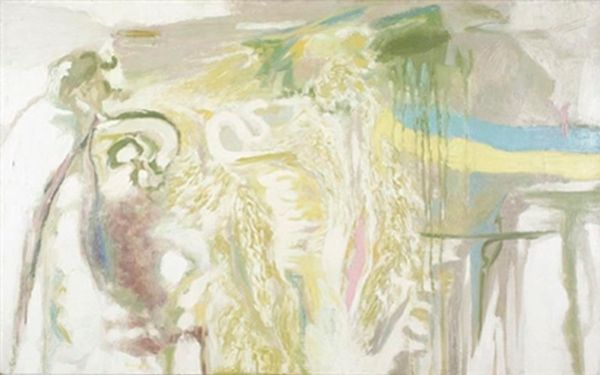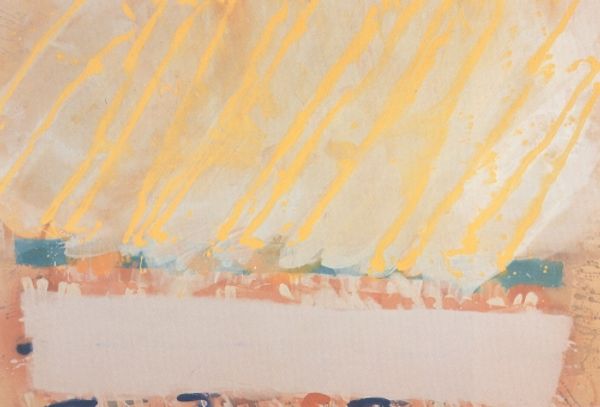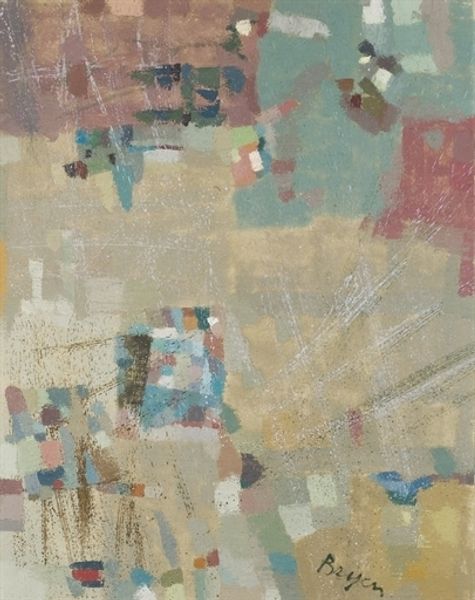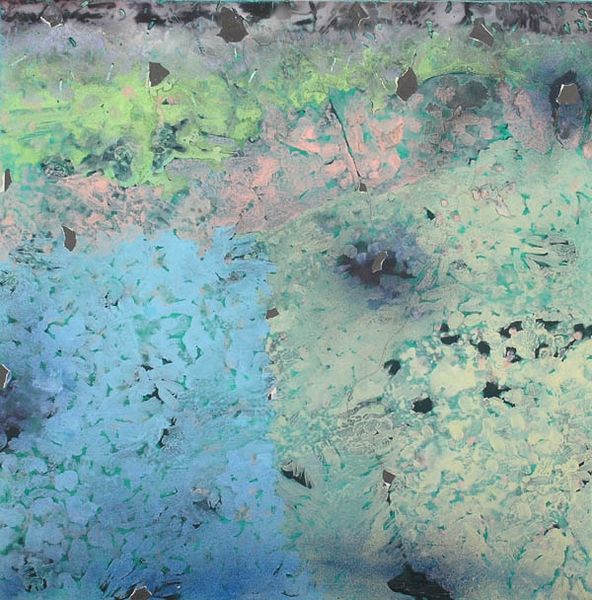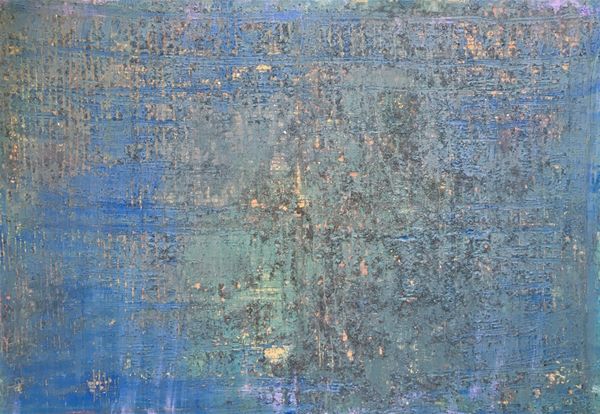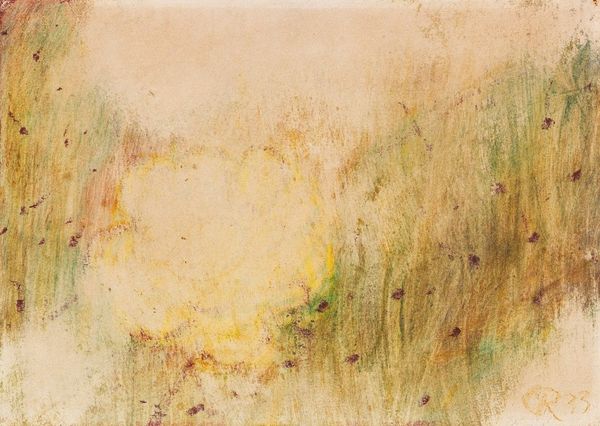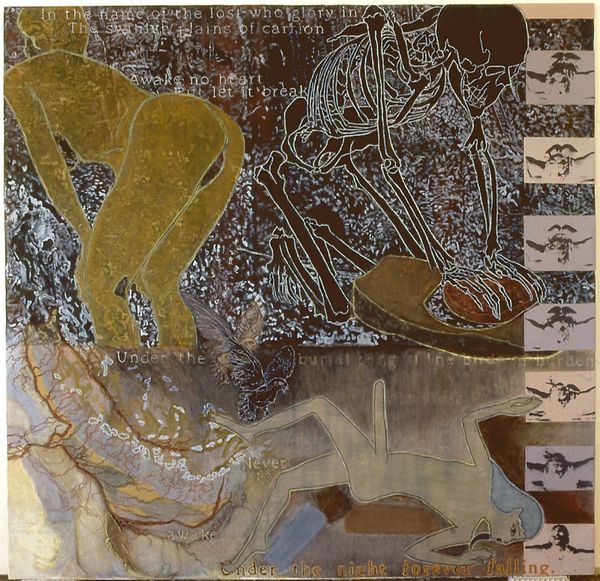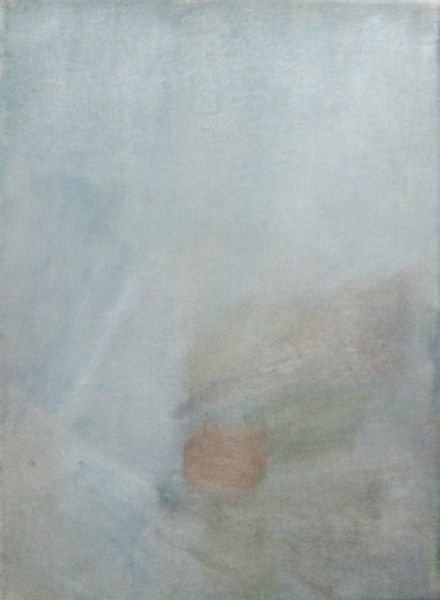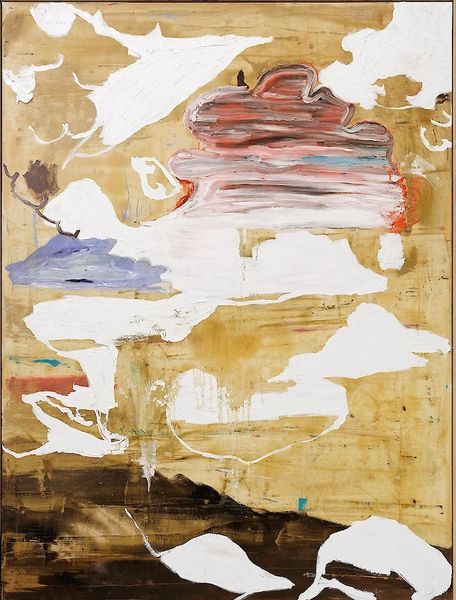
Copyright: Helen Frankenthaler,Fair Use
Curator: We’re looking at Helen Frankenthaler’s "Monotype I" from 1981. Frankenthaler was a significant figure in the Abstract Expressionist movement, pushing the boundaries of color field painting. Editor: It’s subtle, isn’t it? My initial thought is of something washed out, almost ghostly. There's a sense of layers being pulled away to reveal others, creating an ephemeral feeling. It looks as though it would be on quite absorbent material, allowing colors to really seep into it. Curator: Absolutely. Frankenthaler was renowned for her “soak-stain” technique. By pouring thinned acrylic paint onto unprimed canvas, she allowed the colors to merge and become one with the fabric, challenging traditional ideas about the application of paint on a surface. Editor: Thinking about the "soak-stain" technique, there’s a real emphasis on the material qualities of the paint itself. We see the artist directly engaging with fluidity and the idea of control and chance; as well as what it does when soaked on canvas and how labor is represented as something very subtle in the way the colors mingle, so there’s no obvious physical engagement with the material, so labor is sort of…concealed. Curator: Right. The resulting effect erases the artist's gesture in some ways, which was very deliberate on her part, creating something ethereal. This aligns with broader debates at the time, as there was a shift away from the macho bravado that defined earlier Abstract Expressionists, such as Pollock. Frankenthaler subtly challenged these prevailing norms by focusing on color and transparency. Editor: So it's as much about material interaction, how paint interacts with cloth and creates form, and challenging those "macho" aesthetics of the time. Looking closer, one might consider the physical involvement necessary to execute these expansive canvases… even an airy wash-and-soak process involves some labor. The large scale necessitates mobility and decisions on pouring, directing color and planning saturation effects on that unprimed canvas. Curator: And "Monotype I," though on a smaller scale than some of her other paintings, is still resonant of that, and offers that glimpse into this fascinating approach to art-making and how it shifts perspectives and the power relations embedded in art-making. Editor: I agree, an interesting shift on how materiality represents ideas about art at the time.
Comments
No comments
Be the first to comment and join the conversation on the ultimate creative platform.
